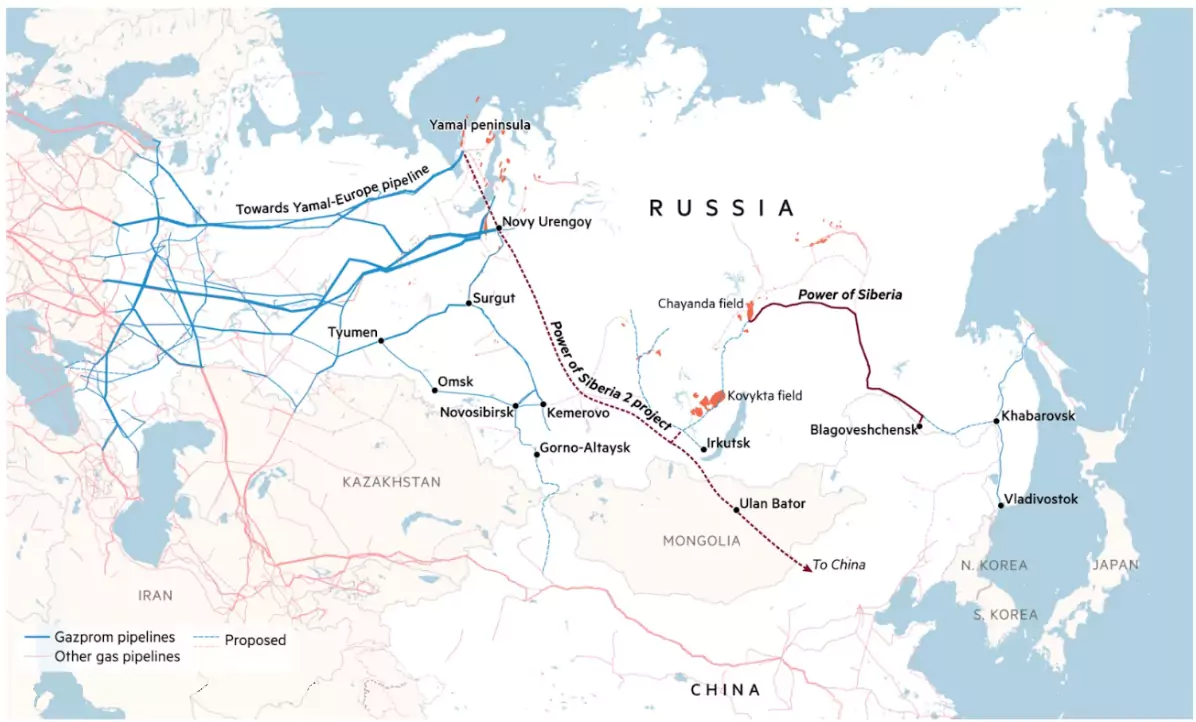Russia and China signed a legally binding memorandum (Sept 2025) to construct the Power of Siberia 2 (PoS-2) gas pipeline.
About PoS-2 Pipeline

- Route: Transits gas reserves from Russia’s West Siberia (Yamal Arctic fields) to northern China via eastern Mongolia, including the Soyuz Vostok segment (~950 km).
- Capacity: 50 billion cubic metres (bcm) annually.
- Complement to PoS-1:
-
- Power of Siberia 1: Operational since 2019.
- Supplies 38 bcm/year (to be raised to 44 bcm/year) from Eastern Siberia to Heilongjiang (NE China).
- Earlier name: Altai Pipeline.
Significance of Pipelines
For Russia: Diversifies exports away from Europe (reduced after Ukraine war sanctions)
- Strengthens Moscow’s leverage in global energy politics.
For China: Secures long-term, affordable pipeline gas supply.
- Reduces reliance on volatile LNG imports.
- Supports transition to cleaner energy (gas > coal).
For Mongolia: Gains strategic importance in Eurasian energy map.
Global Impact
- Reinforces the Russia–China “no-limits” partnership.
- Alters global energy flows:
- Weakens Europe’s bargaining power.
- Reduces LNG demand pressures globally.
- Positions Eurasia as a core hub in the future energy order.
![]() 3 Sep 2025
3 Sep 2025


